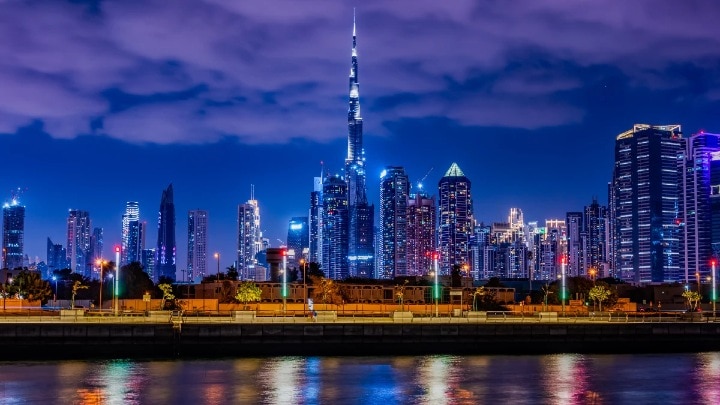June 2, 2020
As the world looks for biosecurity answers, we can take lessons from agriculture
In 2013, a deadly pandemic swept across North America. The cause: a coronavirus that had already raged across China and the Far East. The mortality rate was catastrophic. The victims of this virus were pigs – and the farmers and agricultural workers whose livelihoods depended on them.
As the world learns to deal with the implications COVID-19, there are lessons we can learn from agriculture and from the farmers who have spent decades with the reality of animal pandemics. Signify company Once has a unit that specializes in innovative solutions that use light to stop the spread of disease in animals. Now, these technologies are set to play an even more vital role.
“In 2013 and 2014, we lost more than ten percent of piglets in the United States to a condition caused by a coronavirus: Porcine Epidemic Diarrhea (PED). Mortality rate for piglets was above seventy percent. This is just one of the animal pandemics we’ve seen,” says Once Business Leader, Zdenko Grajcar.
Once products include the BioShift Chamber, a piece of equipment resembling an industrial microwave oven. The BioShift Chamber uses UV-C light to disinfect objects, breaking down the DNA and RNA of viruses, bacteria, spores and molds. It is amazingly effective.
There are no known pathogens resistant to UV-C radiation, and the process takes just five minutes. Until recently, the BioShift Chamber was exclusively used in agriculture. But in light of the current pandemic, it’s taken on some new applications.
“We designed the BioShift back in 2013 for sow facilities where piglets are bred and raised. We were seeing PED outbreaks in facilities that appeared to be completely biosecured. All visitors were showering in and showering out, taking both a chemical shower and a regular shower. The spread continued, and we found that it was happening through objects and tools. Visitors would bring in their cell phones, their lunchboxes, their glasses, their watches. Any of these could be potentially infectious.”
“The only way to stop the virus at that time was to spray everything in chemical disinfectant. But you’d have to submerge the entire phone or pair of glasses in disinfectant for it to be really effective.”
The Once Bioshift chamber worked so well that the company began to receive enquiries from unexpected sources.
“This chamber disinfects tools and equipment, regardless of what those tools and equipment are used for. Now, there are BioShift chambers in police stations. Police officers touch their guns, handcuffs and radios, and all of these can be disinfected with UV-C. It’s not just COVID-19 they’re dealing with. They have to consider everything from flu, to blood, to herpes. It’s the same for other first responders like firefighters and paramedics, and really, anyone who comes into contact with potential infections.”
Germicidal UV-C is very effective in disinfection, even against viruses. But it’s also dangerous to humans and animals. It is best left to the professionals. People who are working with UV-C must follow safety measures and, for surface disinfection, take precautions to ensure there are no people or animals in the area. A chamber is a safe way of applying UV-C as only items in the chamber are exposed to the radiation.
“The COVID-19 pandemic has caused a huge demand for this technology. This is because we cannot sustain what is happening now: everyone working from home, not travelling, not going on vacation, not sending our kids to school. Everyone is in overdrive to get this done.”
The Wuhan Institute of Virology has made headlines recently as the world tries to grasp the origins of the COVID-19 pandemic.
“The same Wuhan facility was also testing Porcine Epidemic Diarrhea, which last year alone caused a 50% reduction in the swine inventory in China. These pandemics are huge, but the public doesn’t yet understand it,” warns Zdenko.
“This human coronavirus is unlikely to be the last one. We need to learn from agriculture when it comes to biosecurity measures. For humans, biosecurity will become critical. It’s here to stay.”
Signify (Euronext: LIGHT) is the world leader in lighting for professionals, consumers and the Internet of Things. Our Philips products, Interact systems and data-enabled services, deliver business value and transform life in homes, buildings and public spaces. In 2023, we had sales of EUR 6.7 billion, approximately 32,000 employees and a presence in over 70 countries. We unlock the extraordinary potential of light for brighter lives and a better world. We have been in the Dow Jones Sustainability World Index since our IPO for seven consecutive years and have achieved the EcoVadis Platinum rating for four consecutive years, placing Signify in the top one percent of companies assessed. News from Signify can be found in the Newsroom, on X, LinkedIn and Instagram. Information for investors is located on the Investor Relations page.


December 17, 2024
Transforming Dubai’s iconic buildings with connected lighting from Signify